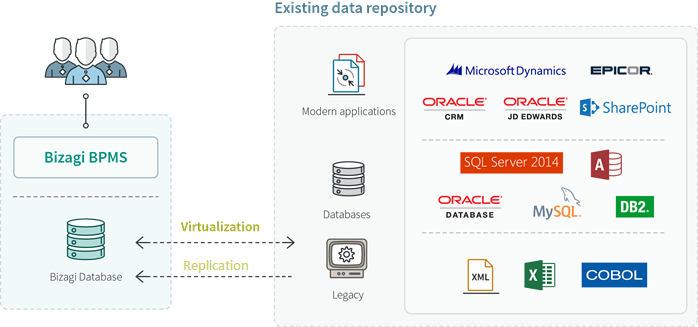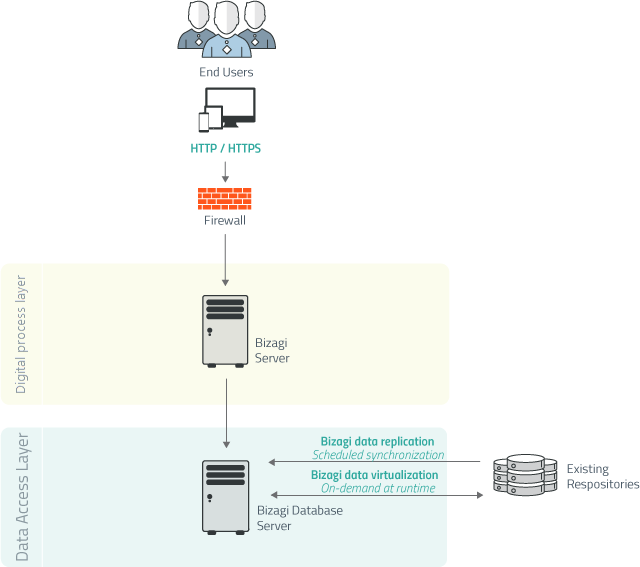Connecting to External Data Sources
Overview
Through Data Modeling in Bizagi, we define and create entities, attributes, and relationships
directly in the local process' data model (at Bizagi's database).
When doing this, Bizagi also offers two powerful integration mechanisms that allow you to
directly integrate existing data sources into Bizagi's data model.
These two mechanisms are known in Bizagi as:
- Data Replication
- Data Virtualization
Both are data-level integration features with powerful benefits,
such as the possibility to reuse and easily connect with external data models and their information.
Bizagi handles synchronization of such information and encapsulates this management,
so that this is transparent for both:
- Bizagi Studio users (e.g., when defining rules or the UI).
- End users, who do not need to know about the data source of such information.
When to Use Them?
These mechanisms are especially useful when we want to integrate repositories
from corporate systems (e.g., CRM, ERP, legacy systems, etc.)
by leveraging reusable objects in Bizagi business process definitions.
This approach is ideal for legacy systems or applications that lack a service-oriented design.
The following image illustrates how this mechanism is useful in many scenarios.

note_pin
For our Automation Service offer, Data Virtualization and Data Replication
are supported using SQL Server and SQL Azure databases.
Data Virtualization and Data Replication Architecture
This section provides an illustration and briefly describes the differences
between using Data Virtualization or Data Replication.

Data Replication
- Used to only get information from an external data source into Bizagi (read-only).
- This can be programmed periodically as a background task.
- For more information, refer to Data Replication.
Data Virtualization
- Enables two-way communication, where Bizagi both reads and writes
information to an external data source at runtime (on-demand). - For more information, refer to Data Virtualization.
note_pin
An important distinction between these options is that each applies to a different type of Entities
(Parameter or Master Entities, respectively).For more details about the types of entities in Bizagi, refer to Entity Types.
To view best practices for Data Virtualization and Data Replication,
refer to Guidelines when integrating data.